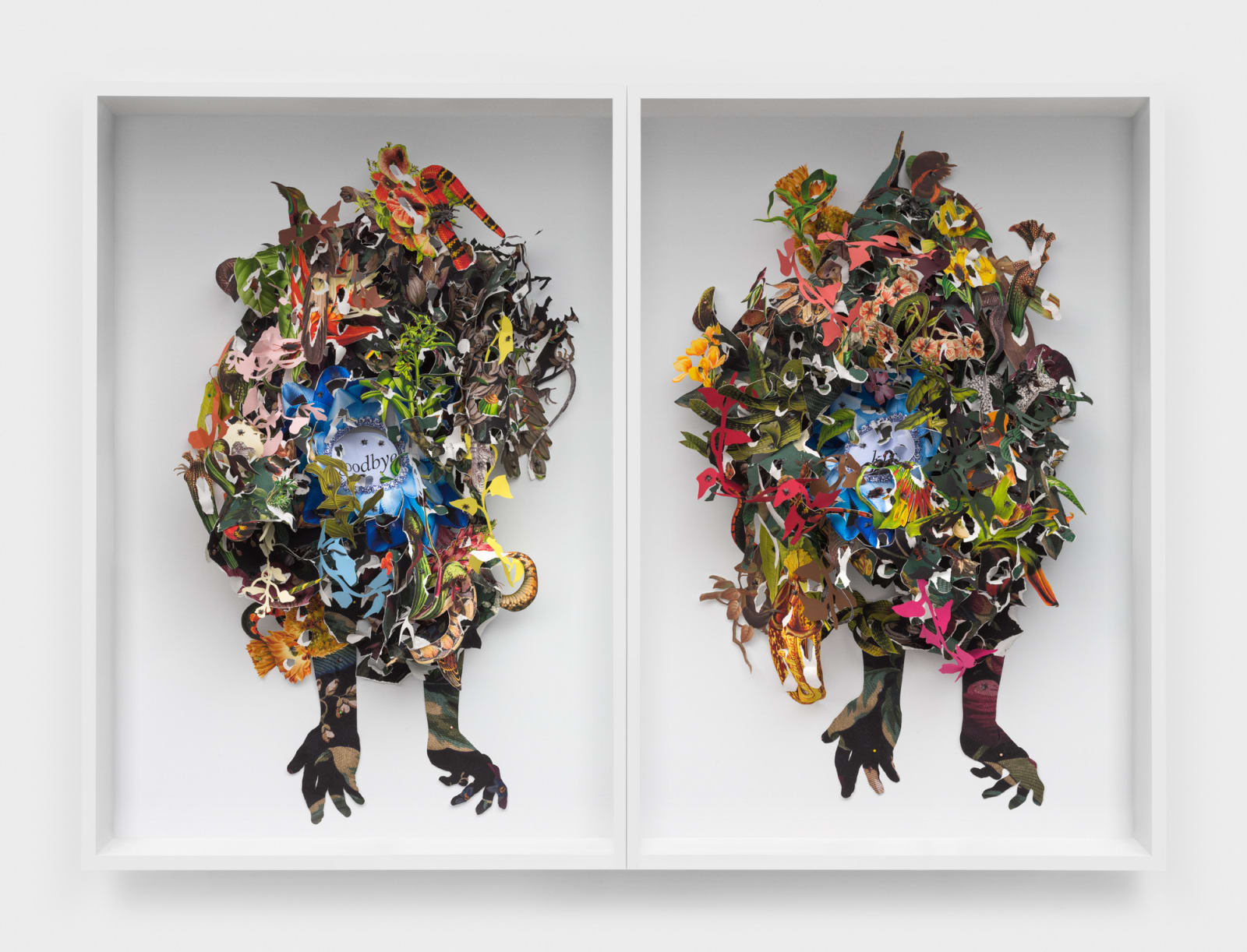
Ebony G. Patterson
...kiss goodbye...goodbye kiss..., 2022
Digital print on archival watercolor paper with hand-cut and torn elements, construction paper, and acrylic in two (2) parts
Left: 139.7 x 87.6 x 27.9 cm
55 x 34 1/2 x 11 in
Right: 147.3 x 90.2 x 27.9 cm
58 x 35 1/2 x 11 in
Each frame: 153.8 x 104.2 x 34.9 cm
60 1/2 x 41 x 13 3/4 in
55 x 34 1/2 x 11 in
Right: 147.3 x 90.2 x 27.9 cm
58 x 35 1/2 x 11 in
Each frame: 153.8 x 104.2 x 34.9 cm
60 1/2 x 41 x 13 3/4 in
Ebony G. Patterson (b. 1981 Kingston, Jamaica) studied a BFA in painting at Edna Manley College, Kingston, Jamaica (2004) before completing an MFA at Sam Fox College, Washington University in...
Ebony G. Patterson (b. 1981 Kingston, Jamaica) studied a BFA in painting at Edna Manley College, Kingston, Jamaica (2004) before completing an MFA at Sam Fox College, Washington University in St. Louis, MO (2006). She lives and works in Kingston, Jamaica and Chicago, IL, USA.
Patterson’s practice addresses visibility and invisibility, through explorations of gender, youth culture and acts of violence, in the context of postcolonial spaces. With the sensibility of a painter, Patterson works across multiple media – including tapestry, sculpture, drawing and installation – united by her consistent visual language and intention. Each work is intricately embellished and densely layered, in order to draw the viewer closer and to question how we engage in the act of looking.
Patterson states that she uses beauty to trap the viewer in a ‘physically, psychologically and emotionally’ in an intricate and seducing composition. Shrouding figures almost completely – there is a presence of bodies no longer there, raising pertinent questions about the those who are not visible. People become memorialized in Patterson’s gardens – each piece is a marker for bodies overlooked. Life fervently continues, and those who live in the garden persist in finding ways to survive.
Patterson’s practice addresses visibility and invisibility, through explorations of gender, youth culture and acts of violence, in the context of postcolonial spaces. With the sensibility of a painter, Patterson works across multiple media – including tapestry, sculpture, drawing and installation – united by her consistent visual language and intention. Each work is intricately embellished and densely layered, in order to draw the viewer closer and to question how we engage in the act of looking.
Patterson states that she uses beauty to trap the viewer in a ‘physically, psychologically and emotionally’ in an intricate and seducing composition. Shrouding figures almost completely – there is a presence of bodies no longer there, raising pertinent questions about the those who are not visible. People become memorialized in Patterson’s gardens – each piece is a marker for bodies overlooked. Life fervently continues, and those who live in the garden persist in finding ways to survive.